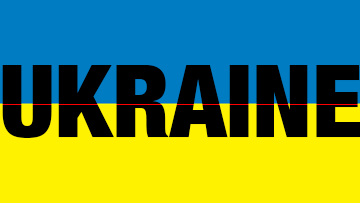Pope Francis I (Papa Pancho by his hispanophone nickname) has made an attempt to soften up the stance of the Catholic Church with respect to homosexuality. At no point did he propose a change in the doctrine of marriage being between a man and a woman, and he certainly did not condone homosexual acts per se, but rather attempted to show compassion and the possibility of gay people approaching the Church for pastoral help.
His now famous statement “Who am I to judge” sounded like a breath of fresh air in an world where judging others has been taken as a God(s)’ given right to anybody who wishes to dictate what kind of life we should live.
As it happens the synod of Bishops rejected the initial wording of the statements on both homosexuality and divorcees and produced a much watered down consensus paper. The “rigorists” won the day and the reformers will have to continue at a slower pace.
Modernisers v. Counter-reformists’ long history
No all proposed changes are good, but the desire for change more often than not emerges from a situation that is perceived as unjust or oppressive. The capacity for change is the only “natural” quality of the human being and willingness to explore new ways create a typo of personality and society; rigidity and attachment to the past create different ones.
The winds of change blow again in all latitudes. Youth movements awaken in Europe, Africa, Asia, and the Americas. Progressive Latin American governments experiment with alternative models; updated ideas of nonviolence flourish everywhere. But vested interests and fear conspire against the new world that is being borne. Every occasion is good to start another war, and reform should be stifled.
This is, of course, not new, it has been happening since the dawn of history, and God(s) has been invoked to justify sticking to outdated and repressive practices just about everywhere. An indiscriminate rejection of religion, God and transcendence has been the sad consequence of throwing the baby with the bathwater. But we have today the possibility of reconciling progress and spirituality as new forms of finding one’s way to the most Sacred in the profound depths of human consciousness thrive and accompany new social movements.
A New Spirituality for a New Human Being
Contradiction is the sign of the violent system in which we live. We are forced to hold together, as if it were the most normal thing in the world, opposite thoughts, feelings and actions about our daily life concerns. We feel exploited and demeaned in our jobs but we think we cannot find another (high unemployment, economic crisis, blah, blah blah), therefore we learn to act as if all were OK. In the same way many faiths declare that being gay, divorced or simply sexually active to be offensive to God, imposing on the believer another contradiction.
Contradiction is a source of internal violence which sooner or later becomes externalised contributing to an already violent social situation. And contradiction is the main enemy of spiritual development. Being pulled apart by the struggle between thinking, feeling and acting prevents the formation of a cohesive centre from where to take “reality” in an intentional way. Otherwise we are left to the most mechanical reactions, like revenge, dependency or compulsion, to live a life not different from a dream-like existence.
New spirituality, like the one spreading today as Silo’s Message, does not demand a belief in God, nor does it preclude it. It offers practices that can strengthen the religious feeling in believers and create access to similar registers for non believers, because it is based on experience, It does not require anybody to abandon their churches or start attending them, because getting in touch with the Sacred can be done anywhere by anyone, regardless their age, genders, sexual orientation, marital state, race, language, job, etc.
Human History, even in its darkest moments…
“What energy has moved all this activity, what motor has propelled the human being through history, if not rebellion against death? From earliest times, death has dogged humankind’s footsteps like a shadow. And since ancient times, death has found its way into the human heart and tried to conquer it. What was at first an unrelenting struggle driven by the necessities of life became a struggle driven by fear and desire. And two roads opened: the road of Yes and the road of No. At that point, all thought, all emotion, and all action became torn by doubt over whether to choose the Yes or the No. “Yes” created everything that allowed humankind to surpass suffering. “No” added suffering to pain. There was no person, no relationship, no organization free of its internal Yes and its internal No. Then the separate peoples and nations began to connect one to another, until at last the civilizations came together, and the Yes and the No of every language was heard simultaneously in the farthest corners of the Earth.” (Silo,1981, Madrid).
The central cohesion building in the interior of those who reject the violent contradictions of the system and come together to express themselves through nonviolence, tolerance and the creation of the Universal Human Nation, will applaud any effort, from any corner, to overcome the suffering of the oppressed, the discriminated, the excluded. Sadness in front of failure can only reinforce the purpose to continue searching for the ascending path. The Yes and the No is a daily choice.









